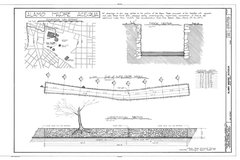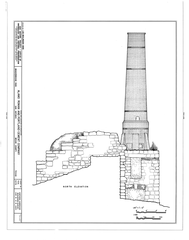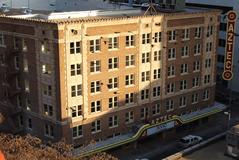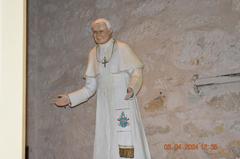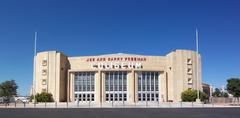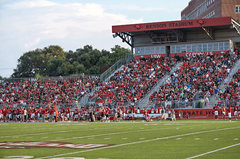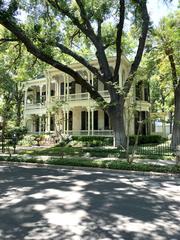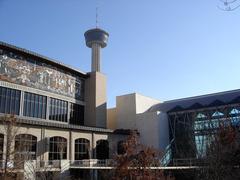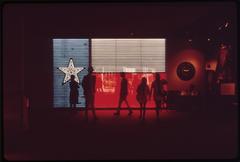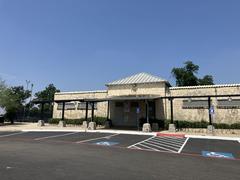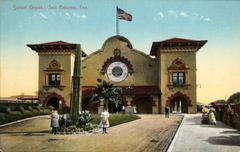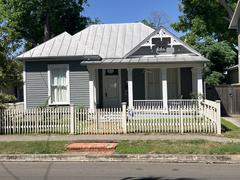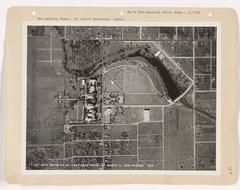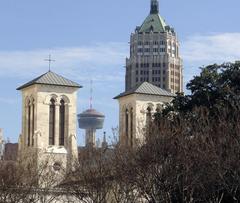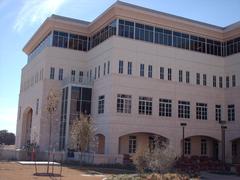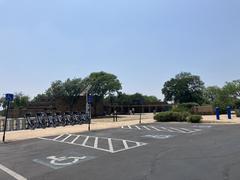Robert E. Lee Hotel San Antonio: Visiting Hours, History, and Travel Guide
Date: 14/06/2025
Introduction
Located in downtown San Antonio, the Robert E. Lee Hotel stands as a testament to the city’s early 20th-century growth and enduring architectural legacy. Constructed in 1922, this Beaux-Arts landmark was once among the city’s tallest buildings, hosting travelers, military personnel, and social gatherings. Today, though it no longer operates as a hotel and instead serves as a private residential apartment building, its iconic neon sign and historic façade remain prominent features of San Antonio’s urban landscape. This guide provides a comprehensive overview of the hotel’s history, architectural significance, visiting information, accessibility, and nearby attractions—essential for travelers and history enthusiasts planning a trip to San Antonio.
Table of Contents
- Introduction
- History and Early Development
- Architectural Features and Urban Context
- Social and Cultural Significance
- Visiting Hours and Accessibility
- Nearby Attractions
- Preservation and Legacy
- Frequently Asked Questions (FAQ)
- Practical Tips for Visitors
- References and Further Reading
History and Early Development
The Robert E. Lee Hotel was built in 1922 during a period of rapid urbanization in San Antonio. Its name reflects a broader Southern trend of the era, commemorating Confederate figures, aligning with the social and political climate of the Jim Crow era (Texas Historical Commission). The hotel quickly became a hub for travelers, military personnel from nearby Fort Sam Houston, and guests attending events at city landmarks like the Alamo and the Majestic Theatre. It was designed to symbolize modernity and prosperity, contributing to San Antonio’s evolving skyline.
Throughout its years as a hotel, the Robert E. Lee played host to dignitaries, celebrities, and social events, embedding itself in the city’s economic and social life. By the 1970s, declining downtown business and fire code updates led to the hotel’s closure. The building was saved from demolition in the mid-1990s and converted into affordable apartments, ensuring its preservation (San Antonio Report).
Architectural Features and Urban Context
An exemplar of Beaux-Arts architecture, the Robert E. Lee Hotel boasts a multi-story brick façade, elaborate cornices, ornamental terra cotta, and classical detailing. The building’s vertical lines and grand arched windows reflect the ambition of early 20th-century urban hotels, while its neon rooftop sign—installed in 1938—remains a downtown landmark to this day.
Historical photographs and documentation preserved by the Texas Historical Commission reveal original design elements such as high-ceilinged lobbies, decorative stonework, and marble finishes. Although interior access is restricted, the exterior retains much of its original grandeur, standing out amid San Antonio’s blend of historic and modern architecture.
Social and Cultural Significance
From its opening, the Robert E. Lee Hotel was a focal point of San Antonio’s social and cultural scene. Its grand lobby and public spaces hosted banquets, civic gatherings, and community celebrations, attracting both locals and out-of-town guests. The building’s proximity to cultural landmarks like the Alamo and the River Walk further amplified its importance.
Today, its name and history prompt ongoing conversations about the commemoration of Confederate figures and the evolution of public memory. The preservation of the hotel—now the Robert E. Lee Apartments—offers a lens through which to examine San Antonio’s changing social, cultural, and architectural landscape (San Antonio Report).
Visiting Hours and Accessibility
Can You Visit the Robert E. Lee Hotel?
- Interior Access: The Robert E. Lee Hotel is now a private residential building. There are no public visiting hours or interior tours available, and the lobby and apartments are not open to visitors.
- Exterior Viewing: The building’s façade and neon sign can be viewed and photographed from public sidewalks at any time.
- Location: 111 W. Travis St., San Antonio, TX 78205
- Accessibility: The downtown area is pedestrian-friendly, with sidewalks accessible to visitors with mobility needs. The neon sign is best viewed at night from Main Avenue and nearby public spaces. Public transportation, including multiple VIA Metropolitan Transit routes, serves the area.
Nearby Attractions
Make the most of your visit by exploring these nearby San Antonio landmarks:
- San Antonio River Walk: A lively network of walkways, shops, and restaurants along the river.
- The Alamo: Texas’s most famous historic site, just a short walk away.
- Majestic Theatre: A restored 1929 theater hosting performances and concerts.
- Main Plaza: The historic heart of the city, surrounded by government buildings and hosting frequent events.
- Menger Hotel: Another iconic historic hotel with classic architecture.
These landmarks, along with the Robert E. Lee Hotel’s exterior, provide a rich walking tour of San Antonio’s architectural and cultural heritage.
Preservation and Legacy
The Robert E. Lee Hotel is listed on the National Register of Historic Places, and preservation efforts have focused on maintaining its architectural integrity. The building’s neon sign, despite periodic debate about its Confederate reference, remains a recognized symbol of downtown San Antonio (San Antonio Report). The Texas Historical Commission and local organizations continue to document and protect its legacy, ensuring it remains a touchstone for future generations (Portal to Texas History).
Frequently Asked Questions (FAQ)
Q: Can I stay overnight at the Robert E. Lee Hotel?
A: No, the building functions as private apartments and does not offer lodging.
Q: Are guided tours available?
A: There are currently no guided tours of the building’s interior, but many walking tours of downtown San Antonio feature the hotel’s exterior and historical context.
Q: Is there an admission fee to visit?
A: No admission fee is required to view or photograph the building from public areas.
Q: Is the site accessible to people with disabilities?
A: Yes, public sidewalks and viewing areas are accessible.
Q: Are special events held at the site?
A: No public events are held at the Robert E. Lee Apartments, but there are frequent cultural events in the surrounding downtown area.
Practical Tips for Visitors
- Best Viewing: Evening hours provide optimal visibility of the neon sign.
- Public Transit: Use VIA Metropolitan Transit routes for easy access to downtown.
- Combine Visits: Plan to visit the River Walk, the Alamo, and the Majestic Theatre for a comprehensive downtown experience.
- Respect Privacy: Remember that the building is now a private residence; please do not attempt to enter or photograph inside.
References and Further Reading
- Portal to Texas History: Robert E. Lee Hotel Archive
- Texas Historical Commission: National Register Collection
- San Antonio Report: Ownership and Preservation
- San Antonio Visitor’s Guide
Final Tips and Summary
The Robert E. Lee Hotel serves as a prominent reminder of San Antonio’s architectural grandeur and evolving history. While interior access is restricted, its preserved exterior and neon signage offer visitors a window into the city’s early 20th-century ambitions and social life. Pair your visit with nearby historic attractions for a fuller appreciation of San Antonio’s vibrant heritage. For up-to-date event information and travel tips, consult the San Antonio Visitor Center and the Portal to Texas History.
For a more personalized experience, download the Audiala app for curated walking tours and insider recommendations. Respect the site’s residential status, support local preservation efforts, and enjoy all that San Antonio’s historic downtown has to offer.
Suggested Visuals:
- Archival photographs of the hotel’s exterior, especially the neon sign at night (with alt text: “Robert E. Lee Hotel neon sign San Antonio”).
- Maps of downtown San Antonio highlighting the hotel and nearby attractions.
Related Articles:
Sources:

